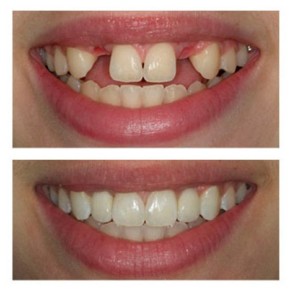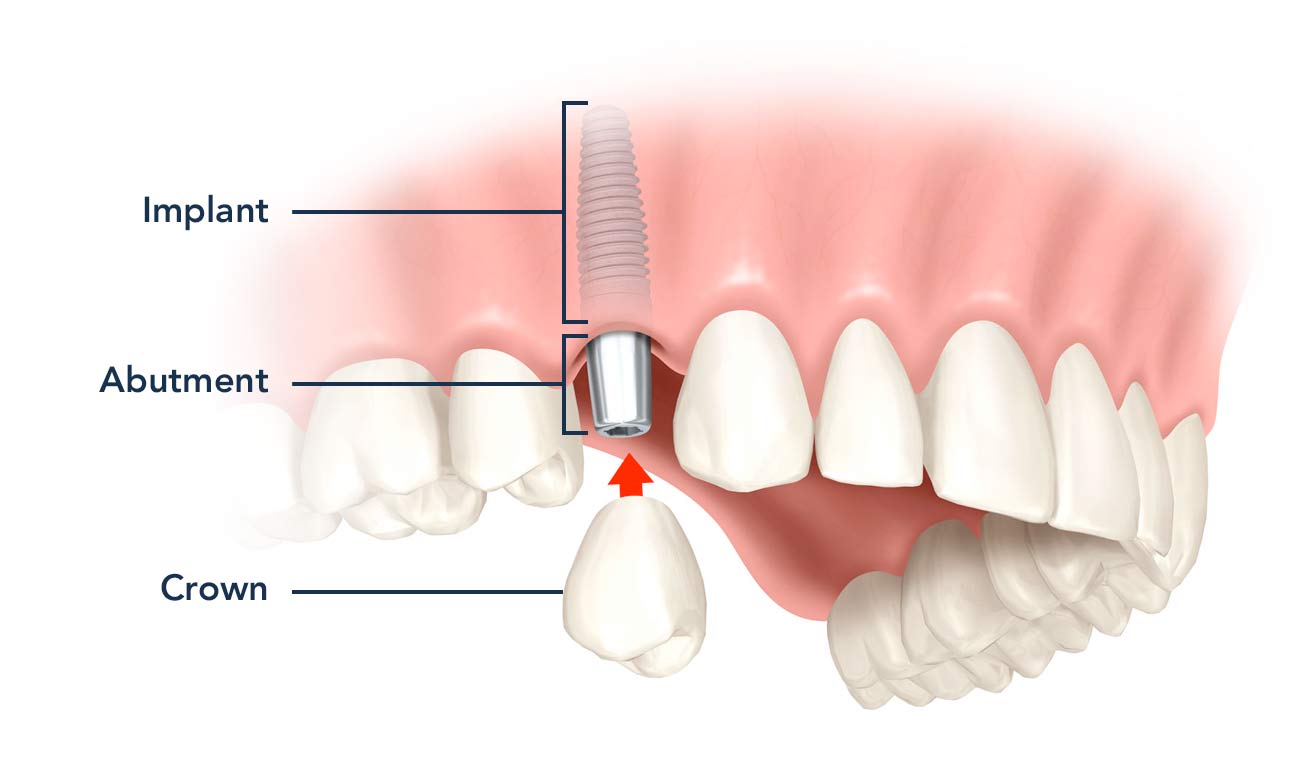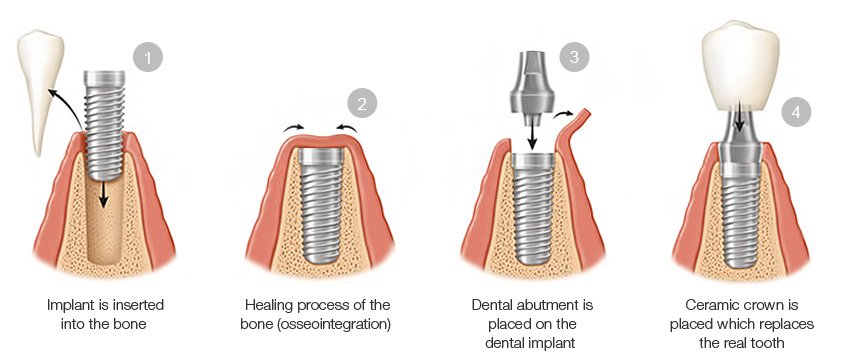Metal Fixture
A dental implant is a metal fixture made from titanium metal. Titanium is specifically used in the fabrication of permanent implants because this metal has a long clinical history of fusing predictably to bone. Not only is titanium used for dental implants, but for years it has been used in the reconstruction of hips and knees and as rods or pins inside bone. It is biocompatible, meaning that the body generally does not reject it and it does not leak harmful byproducts into the body. Hyper-sensitivity to the metal is extremely rare. Implants come in different sizes and lengths in order to meet space issues.
Special Engineering
Implants are coated in the production lab with a special material that encourages bone to fuse to it. The design of the implants normally utilizes threads that look like a typical wood screw. This design allows the implant to have a greater surface area to integrate with the bone. Often, a paste is used at the placement of the implant, which is commonly referred to as bone augmentation. This paste provides scaffolding in the implant site that also encourages the growth of new bone around the implant.
 Bone Integration
Bone Integration
An implant is placed in the space where a tooth is either missing or has been removed. Given the proper conditions and surgical technique, bone in the site where the implant has been placed begins to re-generate. New bone cells are produced by the body and deposited in the matrix around the implant and on the pre-coated surface of the fixture itself. These new cells fuse or bond to the implant in such a way that the implant and the jawbone become one. This process is called integration. Once the implant is fully integrated with the bone, it cannot be removed unless it is surgically cut out of the bone. This is the feature of dental implants that permits the predicable, long-term retention of a crown that is later secured to the implant.
Implant Restorations
The implant itself resides under the crest of the jawbone and beneath the dental gums. Once an implant has properly fused to the bone, a dental tooth restoration, or crown, can be attached to the implant. It is the crown that is used to restore the space left where a natural tooth is missing. It is also what used for chewing. A proper restoration will look aesthetically pleasing and will function in every respect the way a natural tooth does. It is free-standing, non-removable and does not break down over time. Implants are a modern dental miracle. They can be used to restore a single tooth or a full set of teeth. They are predicable and cosmetic and functional. For those who have lost one or more teeth, dental implants provide a way to start over.
Dr. Turner has devoted a great deal of time mastering the use of dental implants. He is always willing to provide a no-cost consultation to those wishing to know how to restore missing or damaged teeth with implant restorations.

Dental Implants // Before and After







